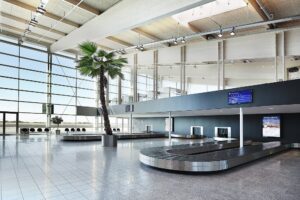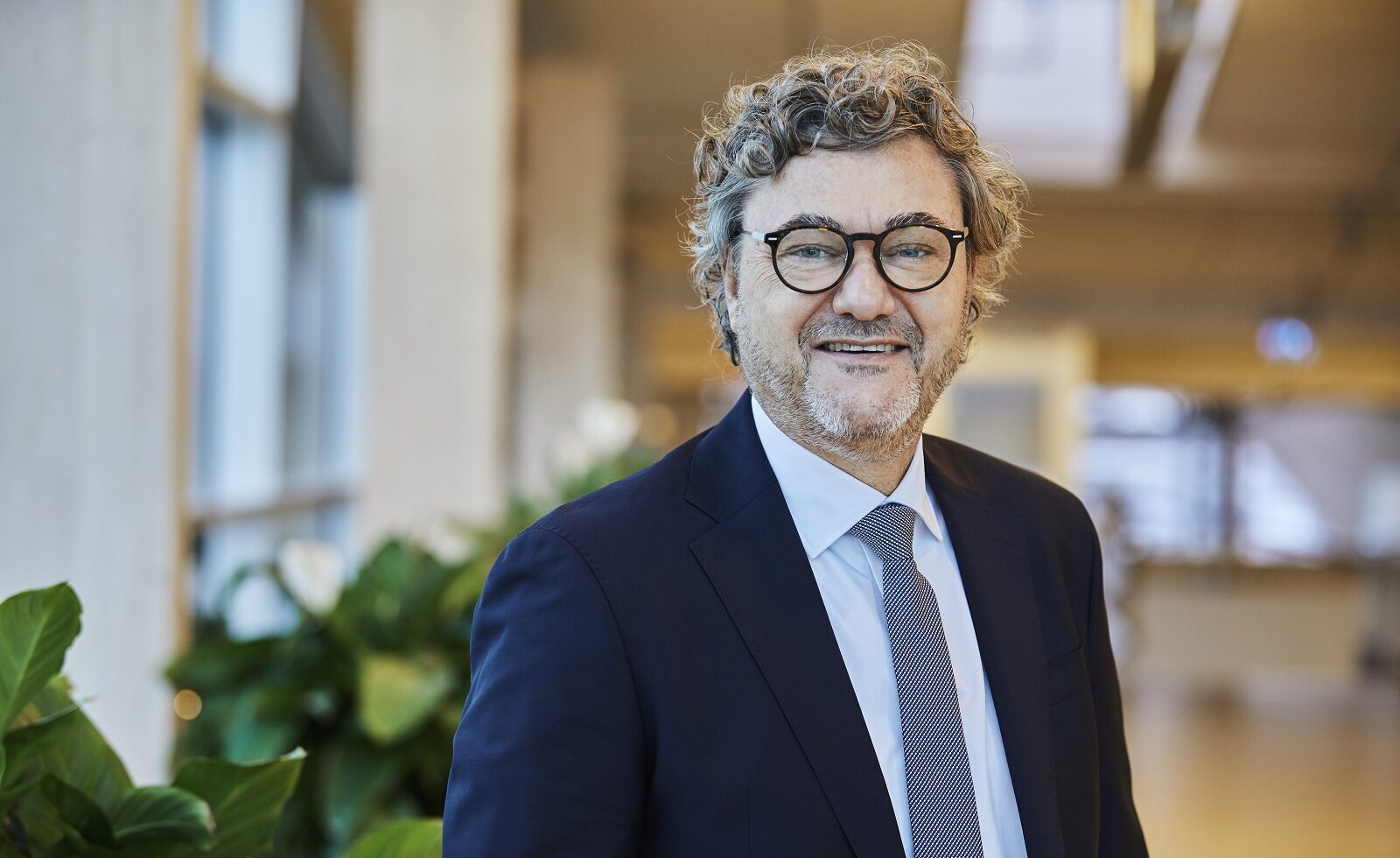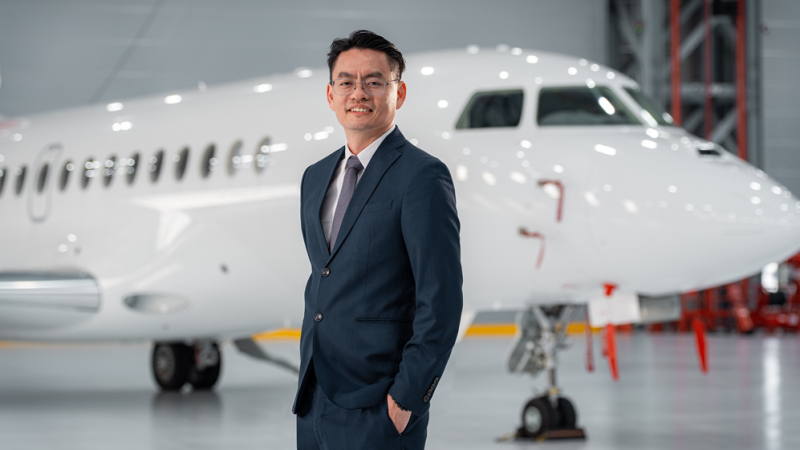Aalborg Airport, Denmark’s third largest, is situated only 6 km from the centre of Aalborg, a city in the Jutland region of Denmark. It is a modern airport with international and domestic flights, including many daily flights to and from Copenhagen.
Opened for traffic in 1938, the airport has over the years become a modern travel hub. From 2008 to 2019, passenger numbers doubled, and today the airport attracts passengers with its numerous travel destinations, good availability of parking spaces – with an increasing number of electric charging stations – and direct trains to the airport from across all of Jutland.
The main Aalborg-Copenhagen route is still Denmark’s busiest domestic route in 2023, accounting for over half of all passengers on Danish domestic routes, but the airport has recently significantly boosted its reach, says CEO Niels Hemmingsen. We spoke to Mr Hemmingsen over a year ago, when global aviation was more or less grounded by the pandemic and came back to see what progress has been made on the airport’s ambitious projects.
“Although the first quarter of 2022 was still heavily affected by the pandemic restrictions, traffic started to pick up relatively quickly. We reached 93% of our 2019 levels by the end of the year, and hit 1.4 million passengers,” he said. “Both leisure and charter operations have increased significantly and the prospects for this year seem very good, as airlines are trying to resume their previous destinations and in spite of the war, inflation and dire economic forecasts, the urge to travel has remained.”
Expanded reach
Over the last year and a half, the airport has been significantly upgraded and now can accept larger aircraft as well as add cargo operations. Speaking about recent events, Mr Hemmingsen highlighted a significant milestone reached in 2023 – in April, SAS opened a brand-new route from Aalborg Airport to New York, with three weekly departures, delighting both businesses and private passengers. The new route strengthens accessibility to and from Jutland – a need that has been increasing for the past several years, and which is now finally being met.
private passengers. The new route strengthens accessibility to and from Jutland – a need that has been increasing for the past several years, and which is now finally being met.
Mr Hemmingsen pointed out that transatlantic traffic will be further strengthened later this year, as Icelandic PLAY plans to open a new non-stop route from Aalborg Airport to Reykjavik in June – with two weekly departures until the end of October.
The new Aalborg-Reykjavik route marks the next step for international development at Aalborg Airport. “The route will be of great importance for holiday travellers from Denmark to Iceland, but also to those travelling to the eastern part of the United States, as well as Canada.”
“The transatlantic traffic is vital, and will benefit the whole region, opening up new business opportunities, but we are also adding more leisure destinations – Alicante is coming back, we are opening up Barcelona, we are increasing our flight frequency to Malaga. Most recently, Norwegian has opened a direct route from Aalborg to Tenerife.”
Towards green aviation
Mr Hemmingsen reflected that as the focus on sustainability increases, Aalborg Airport continues to push very hard for net zero in 2025. Over the last year, a major biodiversity project on an island just off the coast of the airport was finalised. On 300 hectares of land, the project is set to capture 30,000 tonnes of CO2 within the next 10 years. “Some of the CO2 will be used to neutralise the airport, and some will be sold to businesses in the region,” said Mr Hemmingsen.
“This is a multi-dimensional project, aimed not only at capturing CO2 but also looking at bird activity in the region. This is an important aspect for the airport as minimising bird strikes is something we all strive for, helping to increase flight safety. The project has been running for over a year now and is now waiting to be accredited.”
 Another major feat in the sustainability arena is set to be accomplished just outside the airport, where two Power-to-X plants are being built, which will produce green methanol from local waste-based CO2 to be used in the transport sector. The plants are set to be ready for use as early as 2025 and will produce 75,000 metric tons of e-methanol per year.
Another major feat in the sustainability arena is set to be accomplished just outside the airport, where two Power-to-X plants are being built, which will produce green methanol from local waste-based CO2 to be used in the transport sector. The plants are set to be ready for use as early as 2025 and will produce 75,000 metric tons of e-methanol per year.
“We are now looking into how we can ensure that we are at least connected through pipelines, in the hope that we’ll be able to deliver the first domestic Green Flight in 2025,” Mr Hemmingsen explained, adding that all domestic flying in Denmark should be green by 2030. “There’s a lot of development going on in terms of green aviation fuel and having the two plants just at the doorstep of the airport is a great advantage.”
Denmark’s best airport
He affirms that the race towards zero carbon, and initiatives to reach its associated targets, is the prevailing market trend now, accompanied by some emerging changes in aviation travel. While charter and leisure demand is at an all-time high, business travel may slowly start to reflect companies’ efforts to reduce the environmental footprint declared in their CSR reporting.
“Another challenge may be coming from the new government wanting to impose new passenger taxation, and although the final decision hasn’t been made yet, this is expected to have a significant impact on Denmark’s aviation development.”
Despite the challenges, the airport continues to invest in enhancing its facilities, such as new smart meters at the car parks and expanding charging capabilities for electric cars. And the efforts have been duly recognised – in 2022, Aalborg Airport was again voted the Best Airport in Denmark at the Danish Travel Awards 2022.
As the travel market is strongly on its way back, Aalborg Airport is busily planning to continue to increase the number of routes, with green aviation being a major focus area. “We want an attractive airport that is competitive not only in the fight for new routes, but also in the green transition,” concluded Mr Hemmingsen.







